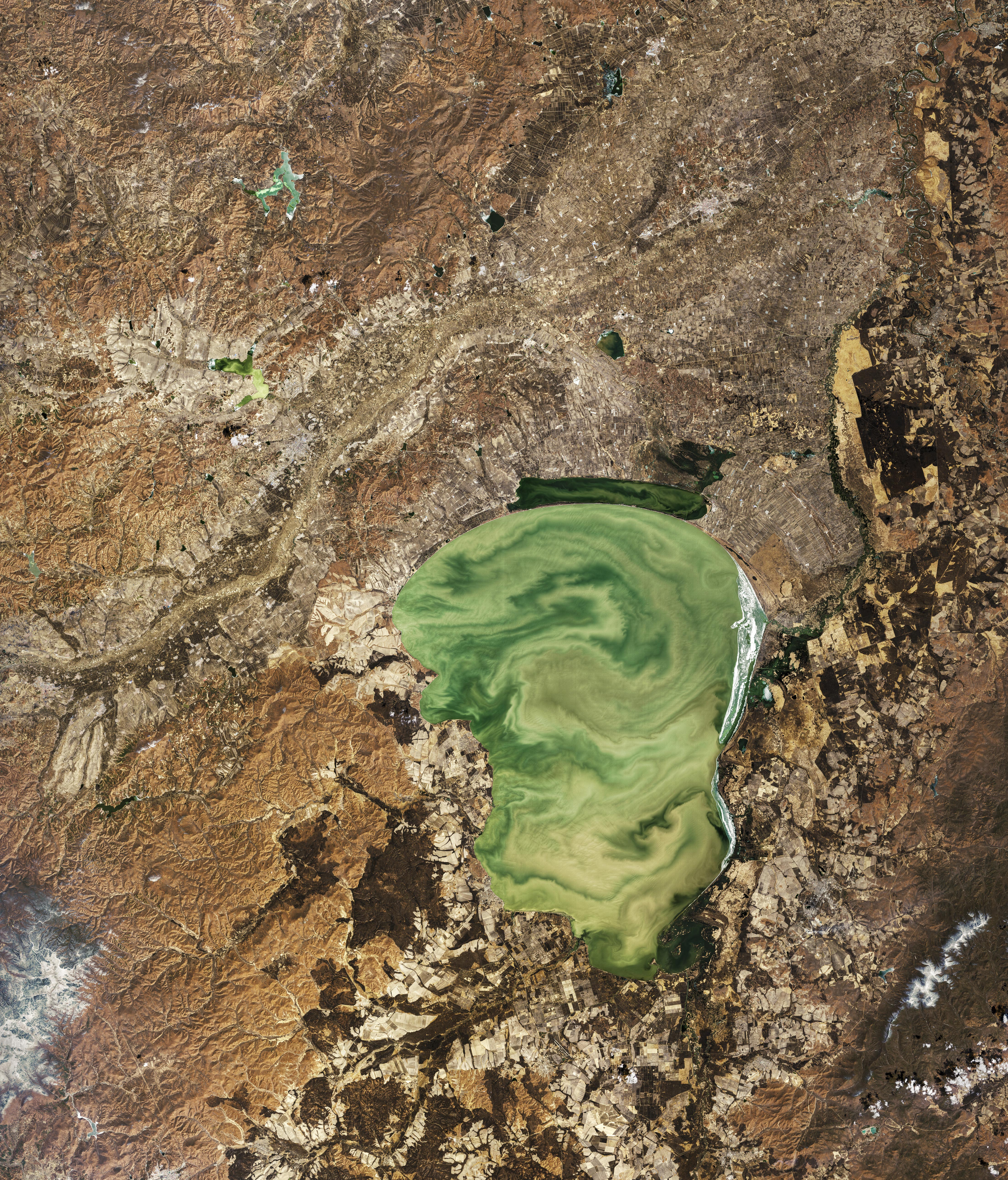[:ja]NASAの地球観測衛星Landsat 8が撮影したロシアと中国にまたがるハンカ湖です。画像の緑色は、暖かくなり珪藻を含む植物性プランクトンが繁茂している様子です。

湖の面積は4,190 km2で、湖の北寄りに直線状の国境線が引かれ、南側3,030 km2はロシアに属し、北側1,160 km2は中国に属しています。湖周辺は、貴重な生態系が残る世界的にも重要な湿地帯で、両国に自然保護区があります。日本や太平洋一帯にも飛来する渡り鳥が多く住み、タンチョウとマナヅルの重要な繁殖地です。ほかにも多くの絶滅危惧種の野鳥・両生類・爬虫類・昆虫などが生息するほか、第三紀の植物群やチョウザメなど多くの淡水魚類、アムールトラなどもわずかながら生息しています。
地上の様子はこちらです。

参考文献: Eerie Green Swirls of Lake Khanka (NASA Earth Observatory)
地球俯瞰画像を見る: LiVEARTH
[Earthview Wonders] No.832: Lake Khanka🇷🇺🇨🇳
NASA’s Landsat 8 satellite captured Lake Khanka or Lake Xingkai, a freshwater lake on the border between Russia and China. The green hues in the water are chlorophyll-rich phytoplankton in the lake, which contains a fairly constant presence of diatoms.

Lake Khanka is a shallow water body, with an average depth of 4.5m and a prevailing depth of 1–3m; the greatest depth is 10.6m. The animal and plant world of Lake Khanka is diverse. In 1971, the Ramsar Convention gave the lake the status of a wetland of international importance. In 1990, the Khanka Nature Reserve was organized in part of the then-Soviet basin of Lake Khanka. In April 1996, an agreement was signed between the Governments of the Russian Federation and the People’s Republic of China on the establishment of an international Russian-Chinese nature reserve around the lake, from the Khankai Reserve in Russia and the Chinese Sinkai-Hu Reserve.
The local scenery on the ground is as follows.

Reference: Eerie Green Swirls of Lake Khanka (NASA Earth Observatory)
See earthview photo gallery: LiVEARTH[:en][Earthview Wonders] No.832: Lake Khanka🇷🇺🇨🇳
NASA’s Landsat 8 satellite captured Lake Khanka or Lake Xingkai, a freshwater lake on the border between Russia and China. The green hues in the water are chlorophyll-rich phytoplankton in the lake, which contains a fairly constant presence of diatoms.

Lake Khanka is a shallow water body, with an average depth of 4.5m and a prevailing depth of 1–3m; the greatest depth is 10.6m. The animal and plant world of Lake Khanka is diverse. In 1971, the Ramsar Convention gave the lake the status of a wetland of international importance. In 1990, the Khanka Nature Reserve was organized in part of the then-Soviet basin of Lake Khanka. In April 1996, an agreement was signed between the Governments of the Russian Federation and the People’s Republic of China on the establishment of an international Russian-Chinese nature reserve around the lake, from the Khankai Reserve in Russia and the Chinese Sinkai-Hu Reserve.
The local scenery on the ground is as follows.

Reference: Eerie Green Swirls of Lake Khanka (NASA Earth Observatory)
See earthview photo gallery: LiVEARTH[:]